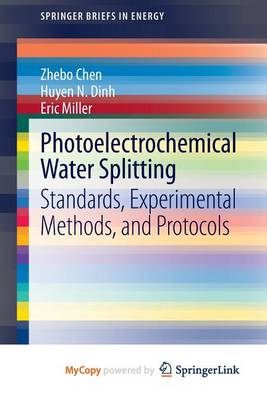SpringerBriefs in Energy
2 total works
Impact of Federal Investment on Hydrogen and Fuel Cell Technologies
by Sunita Satyapal, Eric Miller, and Vanessa Arjona
Published 24 April 2021
This book highlights progress in the development, demonstration, and commercialization of hydrogen and fuel cell technologies, with special emphasis on how federal investment has enabled advances and commercial progress. It starts with a description of how the US government has invested in various energy technologies. This is followed by a brief description of how fuel cell technology works, its importance in the energy arena, benefits, challenges, and current market status of different applications. The third section starts by explaining the R&D status of hydrogen and fuel cell technologies (such as the decreases realized in technology costs), and then explains how federal investments have enabled pathways to commercialization of these technologies. The fourth section highlights supporting and related policy incentives, after which details of successful case studies of fuel cell technology deployment in the materials handling, back-up power, and combined heat and power areas are provided. The book concludes with a summary of lessons learned, recommendations based on experience, and an outlook for the future relating to the advancement and commercialization of the technology.
Photoelectrochemical Water Splitting
by Zhebo Chen, Huyen Dinh, and Eric Miller
Published 1 January 2013
This book outlines many of the techniques involved in materials development and characterization for photoelectrochemical (PEC) - for example, proper metrics for describing material performance, how to assemble testing cells and prepare materials for assessment of their properties, and how to perform the experimental measurements needed to achieve reliable results towards better scientific understanding. For each technique, proper procedure, benefits, limitations, and data interpretation are discussed. Consolidating this information in a short, accessible, and easy to read reference guide will allow researchers to more rapidly immerse themselves into PEC research and also better compare their results against those of other researchers to better advance materials development.
This book serves as a "how-to" guide for researchers engaged in or interested in engaging in the field of photoelectrochemical (PEC) water splitting. PEC water splitting is a rapidly growing field of research in which the goal is to develop materials which can absorb the energy from sunlight to drive electrochemical hydrogen production from the splitting of water. The substantial complexity in the scientific understanding and experimental protocols needed to sufficiently pursue accurate and reliable materials development means that a large need exists to consolidate and standardize the most common methods utilized by researchers in this field.
This book serves as a "how-to" guide for researchers engaged in or interested in engaging in the field of photoelectrochemical (PEC) water splitting. PEC water splitting is a rapidly growing field of research in which the goal is to develop materials which can absorb the energy from sunlight to drive electrochemical hydrogen production from the splitting of water. The substantial complexity in the scientific understanding and experimental protocols needed to sufficiently pursue accurate and reliable materials development means that a large need exists to consolidate and standardize the most common methods utilized by researchers in this field.

